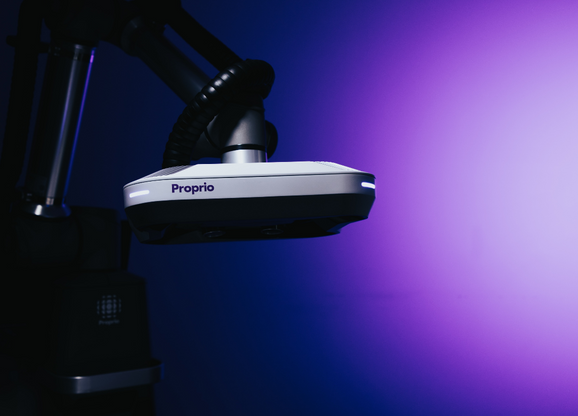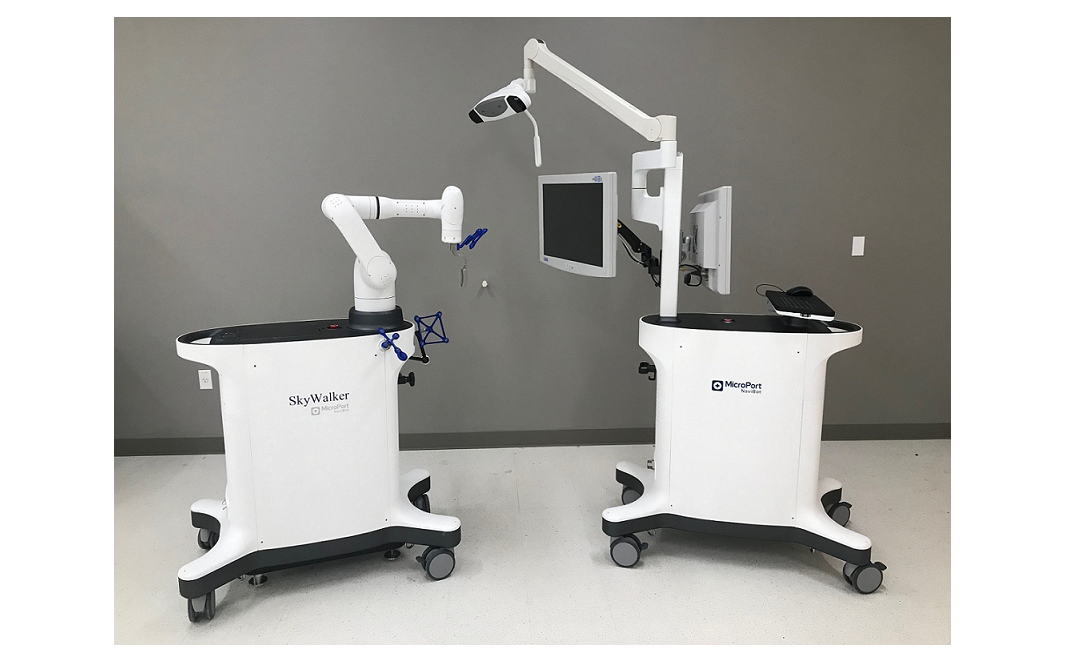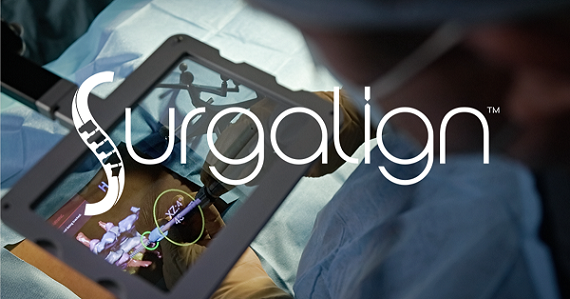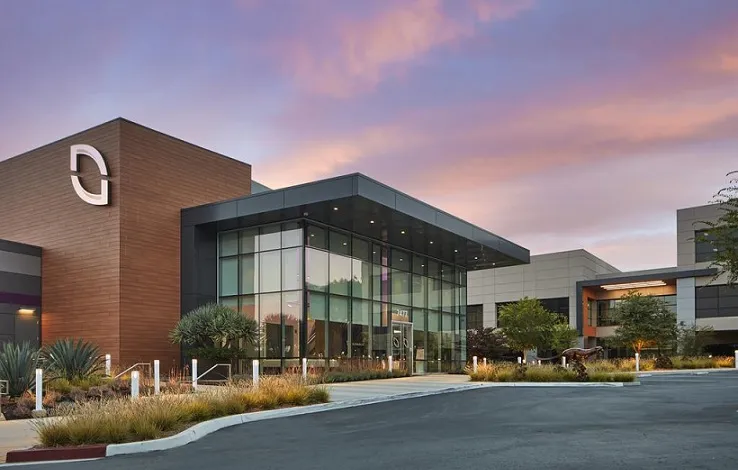By: Dr. Samuel Browd – August 4, 2022, /OrthoSpineNews/ – Spine surgery has an unique opportunity at its doorstep right now – to be the catalyst for change in every OR across every specialty. What do I mean by that?
The United States has the highest rate of spine surgery in the world, impacting approximately 1.3 million people annually. It’s no secret that the high cost of spine surgery procedures and subsequent patient outcomes are highly scrutinized by insurers because the surgery impacts so many people each year. Hospital systems typically look to spine procedures favorably as a major revenue driver given they are high-margin operations and in an arena that continues to see growth in robotic integration. Bottom line, people are paying close attention to spine surgery, and because of these factors, financial and technical growth in orthopedics is often viewed as a north star for other surgical specialties looking to evolve.
The fact of the matter is this: the future of the operating room looks very different from the one we’re used to seeing. We’re moving away from using static registration and radiation-heavy scans and introducing technologies like robotic surgery, augmented reality, and machine learning. Once introduced to the operating room, those of us in the spine industry are constantly finding new ways to use emerging technology. For example, one of the newest technologies set to enter the spine surgery operating room is light field technology. It allows a surgeon to capture an image of the spine and adjust the focal depth of that image so that they can fully explore the spine in 3D within that scene. The future process for registering this type of image also presents significant development and advancement, where we’ll move away from manual registration to automation.
It’s not only our aptitude for using technology in surgery that sets the specialty up to embrace this new OR. We have aspiring and early-career surgeons who won’t know a career without new technology and innovation. In a similar vein to Gen Zers who have never known a world without the internet, cell phones, or social media, today’s rising generation of surgeons is witnessing the entry of innovative technologies into the market at an accelerated pace. The constant wave of newness and upgrades is significantly less overwhelming to them, and the novelty around intelligent and immersive technologies in the OR is less of a long game and more of a welcome concept. This era of surgical experts is embracing their entrepreneurial spirit, bringing the willingness to learn and desire to improve the status quo to the operating room. Modalities that use light field technology will be one of those advancements. Minimally invasive technologies have simplified surgical procedures over the years, but spine surgery is ready for bigger change than simplification, putting into motion the entry and adoption across the entire surgical arena.
The New OR Ecosystem
Of course, the current approach to spine surgery has evolved substantially since the first recorded spinal procedure in the 5th century, but it’s still falling short of utilizing truly modern technologies to streamline the process for surgeons. For example, using robotics to assist with pedicle screw placement to augment a surgeon’s capabilities was an initial step, but we haven’t begun to go far enough when it comes to utilizing navigation, robotics, light field imaging and leveraging data extraction in spine surgery. These are our greatest opportunities in the new OR ecosystem. Most of the innovation in spine surgery over the last decade centered around hardware and implants, leading to commoditization and lack of differentiation in a highly competitive market. This market dynamic has many wondering how to compete and bring unique products focused on the opportunity areas to this hugely profitable and competitive industry.
When it comes to navigation, what has been the focus is 2D video for a 3D dataset. We live in a three dimensional world and are still relying on data that is seen, captured and displayed in two dimensions for surgical procedures. If this sounds outdated to you, that’s because it is. Surgery is a dance with many different steps and partners: imagine a drastic improvement in the rhythm of the operating room where improved visibility and interoperability streamline processes to achieve better outcomes? Here’s what that looks like. In the operating room of the very near future, light field will capture and render 3D images on 2D displays, which allows the surgeon to experience the scene from any perspective. By using machine learning in conjunction with light field, the system will become nearly autonomous in its ability to register this image for the entire spine, helping surgeons achieve global alignment with unmatched precision and confidence. Other algorithms will be able to generate a postoperative report based on the information the surgeon tagged during the procedure that will populate in the patient’s EHR for their records and for billing purposes, replacing the cumbersome process that currently ensues after a procedure.
The same dance can be afforded to robotics. Robotic and robotic-assisted procedures are already making strides in precision and interoperability, but the robot can only perform as well as the navigation system available to it. Expanding the way the surgeon “sees” with the robot is yet another area where light field imaging stands to make a transformative impact.
Finally, we’ll have a chance to eliminate radiation exposure during OR time. We’ve known for a long time that radiation exposure is a serious occupational hazard for staff in the OR who are repeatedly exposed to it. Light field in spine surgery can help eliminate the unintended side effects of surgery to the rest of the spine. By applying this to cranial or other orthopedic surgeries, light field will radically change how we conduct surgery across modalities. It will also revolutionize both patient, surgeon and OR support staff exposure to radiation by eliminating the need for routine scans.
Spine as a Big Data Gateway
The surgical industry as a whole, in an effort to catch up to the excitement around Big Data, seems invested in extracting better data from the operating room. It’s a treasure trove of information that will help improve healthcare across systems if we can extract insights and apply them appropriately. But first, we need to bring the operating room into the 21st century. That cliche statement means three things.
First, better digitization, meaning that we move away from the static information and, obviously, completely eliminate the hand drawn illustrations that we’ve relied on up until this point. Gathering this data in the OR, which can be anything ranging from patient operative data, to surgeon statistics related to their consistency across procedures, to a multitude of other metrics that we have yet to fathom – lays the foundation for improved training for other surgeons from the get-go.
That ties into the second piece, standardization and consistency. It will give us the ability to standardize surgical care and training not only in spine, but across the entire OR ecosystem. This data would improve simulations made available to early career surgeons working up the learning curve. Surgical training programs are highly competitive and only admit a few students each year. Specialized training from highly skilled surgeons can be even harder to access. By incorporating data-driven learning and training into surgery, we can improve patient outcomes across the board. We’ll be able to develop informative datasets about ‘good outcomes’ and ‘bad outcomes’ from surgical procedures across modalities, telling us a lot more than we are able to know now about what techniques and technologies are being used consistently and well.
The third gets a lot of interest, and for good reason. Telepresence and telesurgery stand to benefit greatly from data intelligence within the operating room. Whether a patient is in a remote area or on another continent, the convenience of telesurgery is inarguable. Bandwidth and connectivity challenges are seeing radical improvement, alongside the acceptance of telemedicine and video conferencing in primary care due accelerated by the pandemic. Telesurgery has more momentum than ever, and we can expect this area to evolve rapidly with immersive experiences, such as augmented and virtual reality, that make the tele-present surgeon feel like they are in the operating room. Improved data capture and applied data intelligence will provide the input these experiences need to deliver critical information to the surgeon. Standardizing the use of telesurgery is no longer wildly futuristic.
Spine surgery is in a prime position for advancing the OR in a dramatic and necessary way. As a technology-driven specialty already, it affords every opportunity to evolve various modalities used by other specialties. Possibly even more important to this position is that when we do so, the healthcare industry as a whole will pay attention. The eyes are on spine surgery. Once tapped, the vast data troves that are being left on the operating room floor across all surgeries will be recognized. We’ll be able to standardize and personalize care in a way that we never have before, and a higher caliber of care will reach a wider population of patients across the globe. With informative datasets as a byproduct of standardization, we’ll be able to identify efficiencies and inefficiencies in a variety of surgical procedures and streamline solutions for better patient outcomes. The future of the operating room looks like a substantially different place than where we’ve been working in for decades – but with spine surgery as our north star for evolution, we can accomplish significant advancements together.
About the Author:
Dr. Samuel Browd is the Co-founder and Chief Medical Officer at Proprio, Professor of Neurological Surgery at the University of Washington, and board-certified attending neurosurgeon at Seattle Children’s Hospital, Harborview Medical Center and the University of Washington (UW) Medical Center. He received his M.D., Ph.D. at the University of Florida, completed neurosurgical residency at the University of Utah, and Pediatric Neurosurgery Fellowship at the University of Washington/Seattle Children’s Hospital. He also completed a research post-doctoral fellowship on functional magnetic resonance imaging and operative navigation.
In co-founding Proprio alongside University of Washington’s Sensor Systems Labs’ Dr. Joshua Smith, UW MBA graduate Gabriel Jones, and computer vision specialist James Youngquist, Dr. Browd sought to leverage the emerging technologies of AR/VR and AI to revolutionize the way surgeons navigate human anatomy. Proprio was created with a mission to use technology and data to transform surgical care and improve outcomes.








